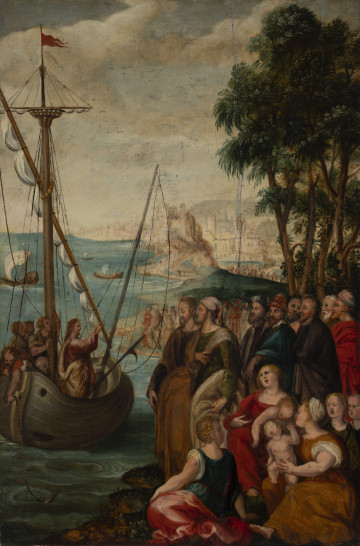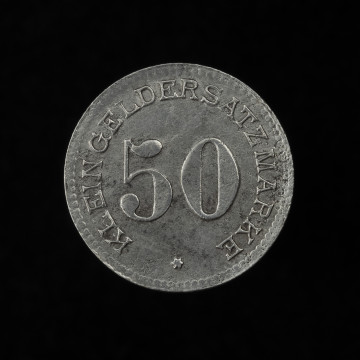
Kuszenie Chrystusa | Temptation of Christ
circa 1577
National Museum in Szczecin
Part of the collection: Renaissance and Baroque painting
The first paintings illustrating Protestant teaching on the Law and the Gospel were created in the late 1620s in the workshop of Lucas Cranach the Elder (1472-1553), a Saxon artist who was a friend of Martin Luther. The tables of Law and Grace, developed by him in several variants and disseminated through prints, became an important part of Lutheran iconography. The painting from the Szczecin collection represents the Prague style (from Cranach the Elder's 1529 work from the collection of the National Gallery in Prague). The direct model for it was a copperplate engraving by the Flemish artist Pieter Nagel (active 1567-1584) made in 1567 according to a drawing by Gerard van Groeningen (active c. 1561-1576).
In the centre of the composition, a naked man is depicted, Jedermann personifying each of the people. The prophets – Isaiah and John the Baptist – turn to him and point out two paths to salvation. One is based on observing the strict Mosaic law, the other on faith in Christ and the grace offered to people. Isaiah, behind which Moses is depicted with the tablets of commandments, Adam and Eve and the scene with the copper serpent, points to a sarcophagus with a reclining human skeleton. Death is the punishment for sins here. However, the prophet draws attention to the copper serpent, symbolising God's grace to converted sinners and foreshadowing Christ's sacrifice. On the other side, John the Baptist points to the resurrected Jesus, triumphantly emerging from the grave, trampling death and Satan. In the background, the infant Jesus with a cross on his shoulder is shown descending from the heavens towards Mary, as well as Christ on the cross and the Paschal Lamb – symbols of sacrifice and redemption. The allegorical significance of the work is emphasised by the tree, whose leafy branches on the Grace side symbolise the hope of eternal life.
Monika Frankowska-Makała
Author / creator
Object type
painting
Technique
tempera
Material
oak board
Origin / acquisition method
legal transfer
Creation time / dating
Creation / finding place
Owner
Muzeum Narodowe w Szczecinie
Identification number
Location / status

circa 1577
National Museum in Szczecin

3. ćwierć XVI wieku
National Museum in Szczecin

1901 — 1925
National Museum in Szczecin
DISCOVER this TOPIC
Museum of King Jan III's Palace at Wilanów
DISCOVER this PATH
Educational path